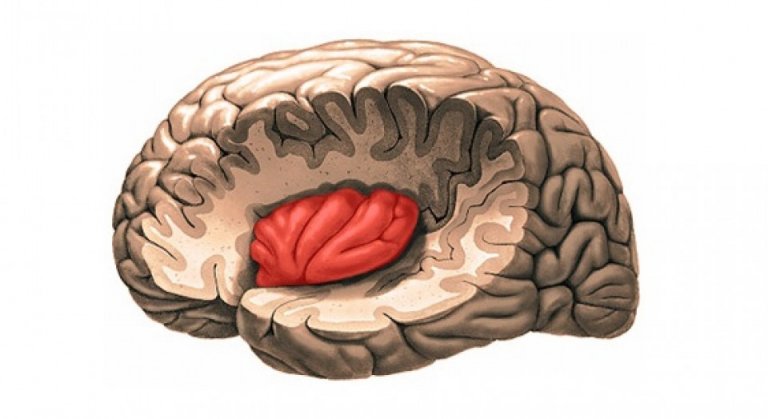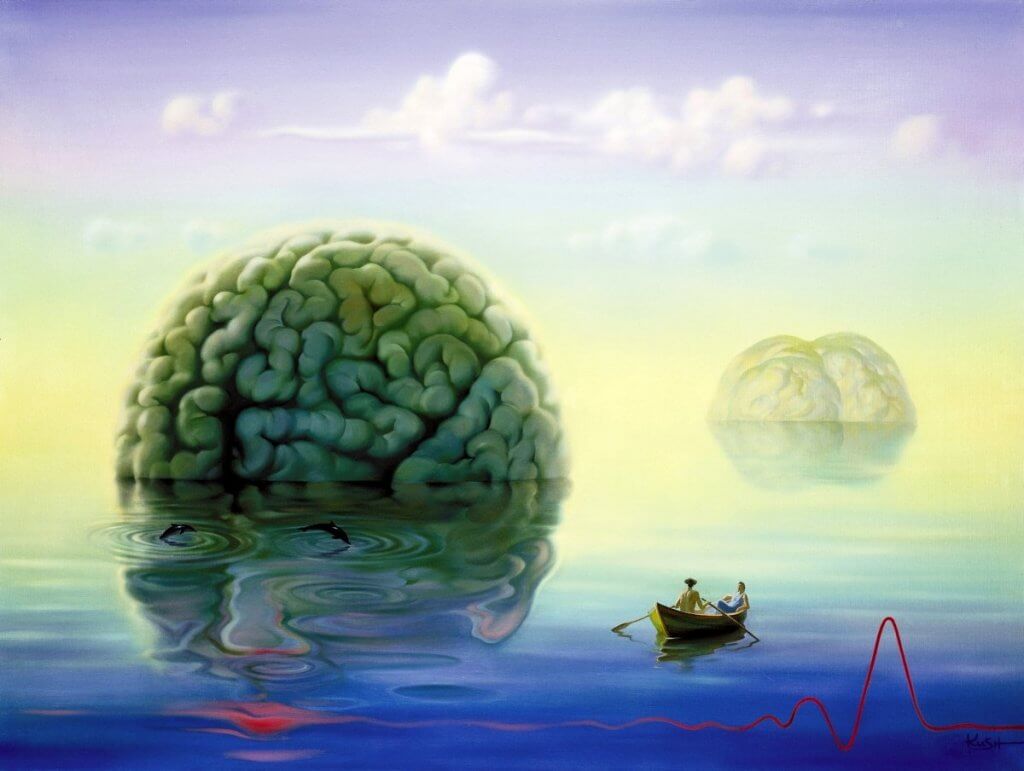The Insula, the Source of Our Emotions and Empathy


Written and verified by the psychologist Valeria Sabater
The insula is a region of the brain as mysterious as it is crucial to understanding human behavior. Some say it’s where our “conscience” is located. Currently, neurologists can only say that this structure functions more like the source of our emotions. It’s where our empathy and intuition live.
Neuroscience is a fascinating discipline that never ceases to amaze. A few years ago, it was discovered that some people are able to quit smoking overnight with no withdrawal problems. Why? When they had an MRI, researchers found a small lesion in the insula.
They also found that alexithymia is related to a problem in this very same region. Alexithymia is when a person has significant difficulty empathizing with the emotions of others.
In essence, they have trouble recognizing their emotions and expressing a feeling verbally. And it turns out it’s intimately linked to this particular little spot.
Indeed, the insula is like a magical fountain infusing every structure of the brain with sensations and emotions. These, in turn, allow us to react, whether positively or negatively.
Because the insula is what gives us feelings like disgust, pride, and lust. It’s also the structure that helps us understand people and even respond emotionally to music…

The insula, a multifunctional structure
The insula is a small region of the cerebral cortex located inside the lateral groove. To reach it, you’d have to dive into the deep fissure separating the frontal and parietal lobes from the temporal lobe.
Interestingly, if this were the 80’s, the only thing we could say is that it’s a dark area of the brain. A structure with unknown functions, the subject of hundreds of hypotheses over the years.
However, the 90’s shed some light on it. Thanks to advances in analytical and diagnostic techniques, this theoretical spot is dark no more. Amazing discoveries were made. Multiple studies were done on patients with brain damage in the insula. They showed that the insula actually plays a very large role in many of our daily activities.
Thus, if we were to ask scientists now what processes this area carries out, they could give a full, interesting response. It’s involved in so much: pain, love, emotions, cravings, addictions, musical enjoyment, decision-making, wine tasting, and the conscience. Incredible, isn’t it?

The insula, cornerstone of our consciousness
Neuropsychologists tell us that we must be very careful when attributing a function as huge and important as consciousness to any region of the brain. However, given the involvement of the insula in a large part of our social and emotional behavior, it’s not hard to come to this hypothesis.
First, because it’s an attractive term. Second, because of how complicated defining with total accuracy which tasks, functions, and processes this area carries out.
As a side note, something else that’s been proven is that people who suffer severe damage to the insula are completely disconnected from their environment and even themselves. They’re characterized by deep apathy and a lack of empathy. They’re unable to enjoy any aspect of life, even unable to experience disgust. That is, they couldn’t differentiate fresh food from rotten.
The insula plays into our self-image
Scientists tell us that the insula is where our being comes together. In other words, where you become aware of your body and mind. However, to understand it better, let’s clear one thing up. No brain structure works independently.
When we make the mistake — common as it may be — of saying that a certain person uses the right hemisphere because they’re very creative, we’re forgetting that the brain is “a whole.” Every part of the brain is connected to all the others. The organ works in perfect harmony.
The same thing happens with the insula. It’s physiologically connected to the body, plays a role in your sense of smell, and generates subjective feelings. The insula is involved in the feeling of hunger and even receives information from skin receptors and other organs.
This structure helps us react when we’re cold or hot, or when something stings or itches. It’s the instinct that tells us things like “Get out of here. You need air to clear your mind…”

That said, animals also have this amazing structure in their brains. Therefore, they also have that sense of physical and emotional awareness. So when a cat, a dog, a Tasmanian devil, or a lemur is hot, it will look for shade.
When it finds food, it’ll choose the fresh over the rotten. When an animal comes across another animal, its intuition will tell it whether the other animal has good or bad intentions. It’ll know instinctively whether it’s going to become prey.
Or if, on the contrary, it is someone they can socially relate to. Also, neurobiologists say that human beings, large primates, whales, and elephants have much more complex and sophisticated insulae.
The insula and addiction
The insula, in turn, can be broken down into different areas. For example, the frontal insula is related to our emotions. Love and hate, gratitude and resentment, shame and distrust, empathy and contempt. There’s a certain point between the frontal area and the anterior cingulate cortex. This is where processes associated with addictions are located.
When a person tries to quit smoking, certain stimuli increase the desire and withdrawal symptoms. Certain scents, social situations, and scenarios intensify the anxiety that secretly governs the insula. All of this because the insula is intimately connected to the limbic system.
There are many studies that show how this small structure plays into addictive behavior. It has to do with what is known as the “craving“ phenomenon, or an intense desire to consume.

In conclusion, the insula can help us humans be the best we can be; it gives us empathy and positive feelings. But it can also bring out our negative, addictive side. Perhaps soon new discoveries will be made about this complex little area of the brain that makes us human.
Here’s a final thought. Whenever you enjoy music or a glass of wine, remember what allows you to enjoy such pleasures. Thank your insula.
This text is provided for informational purposes only and does not replace consultation with a professional. If in doubt, consult your specialist.








